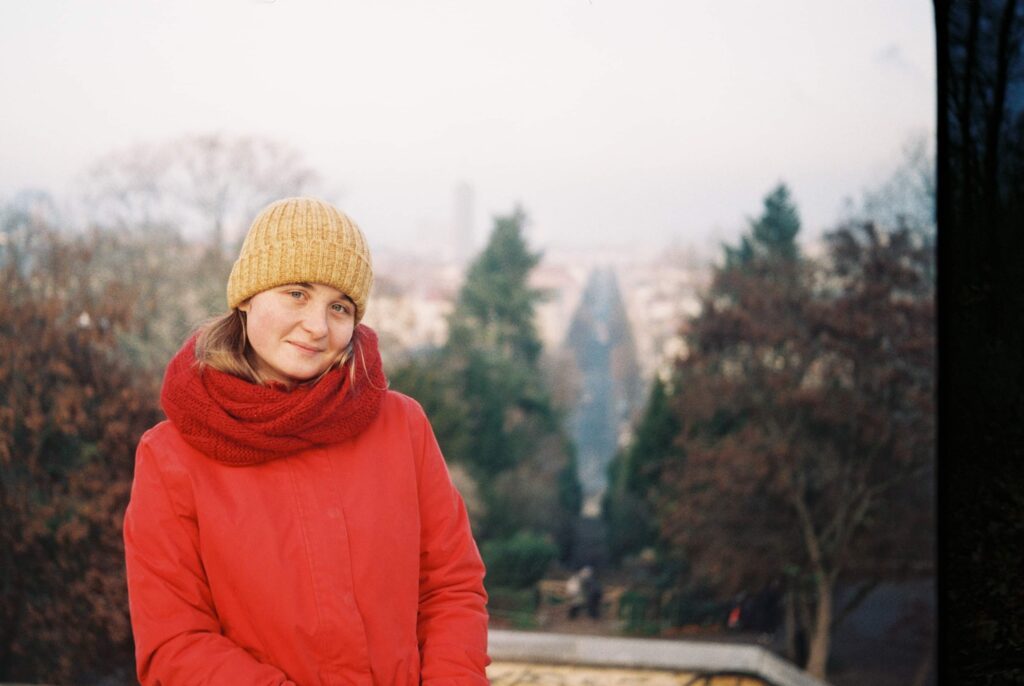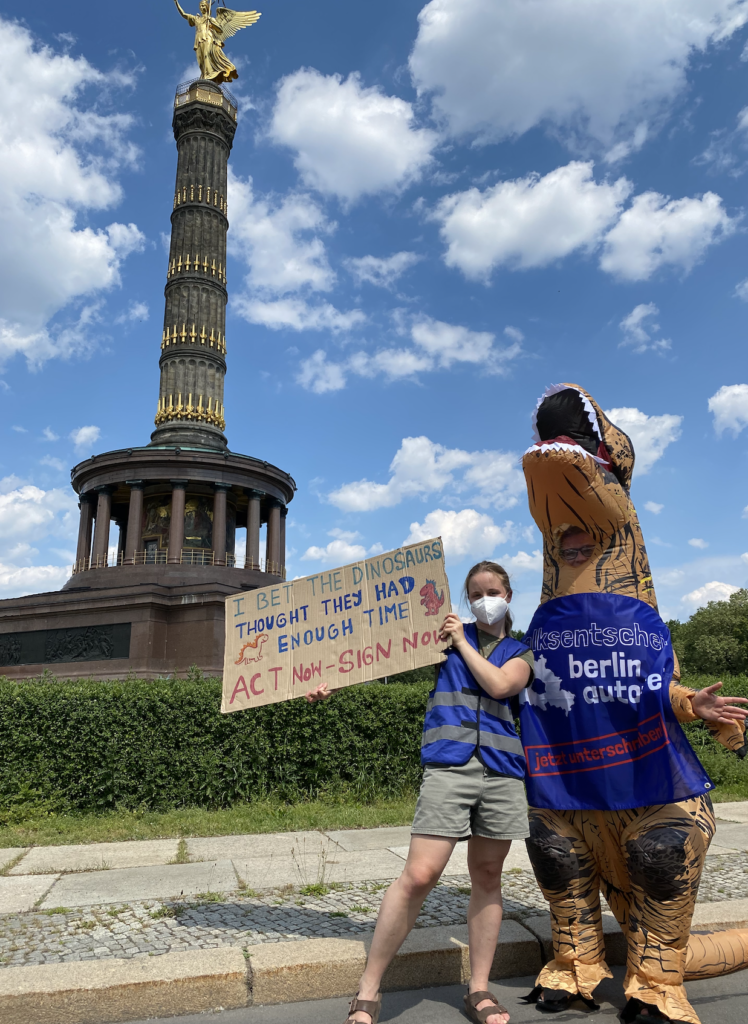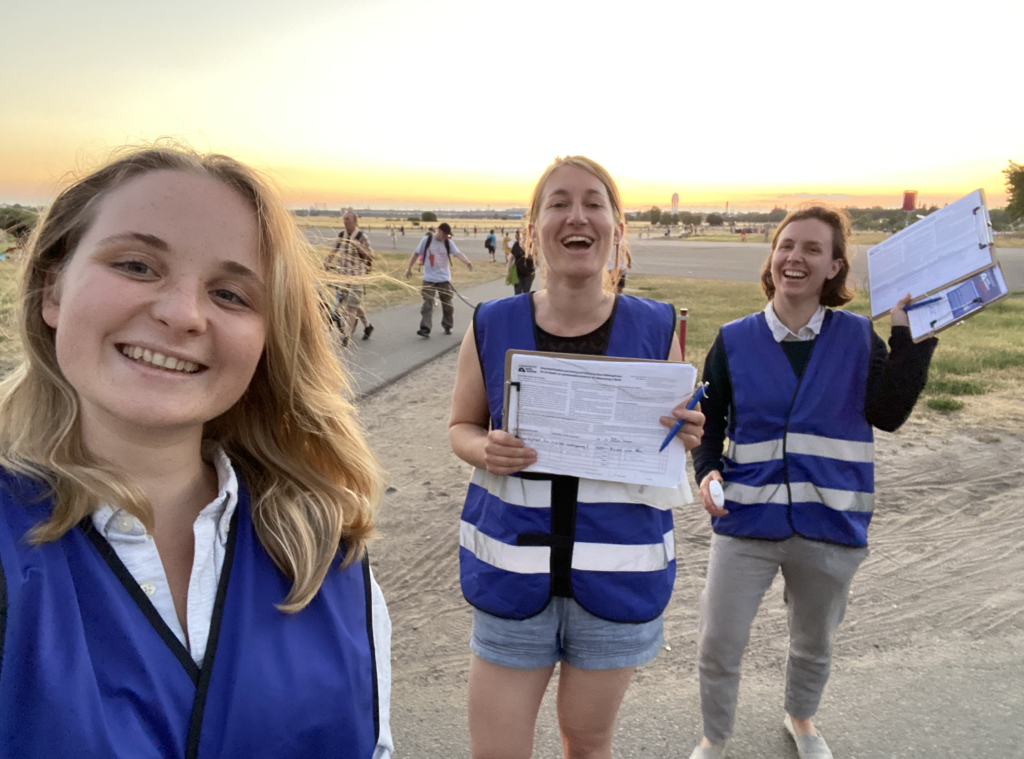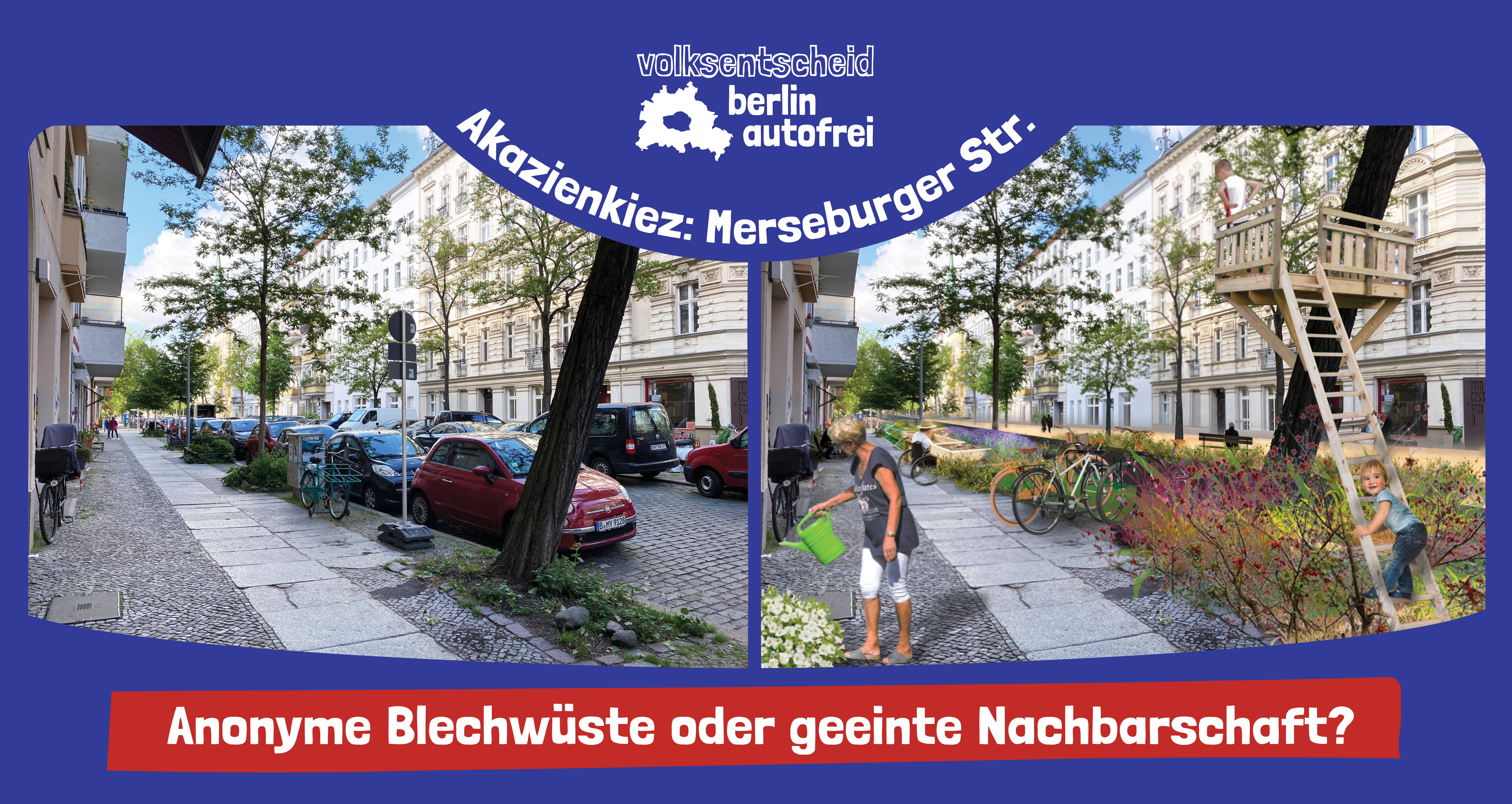
An urbanist who likes studying cities and managing urban projects, Varvara Borodkina works with the initiative Volksentscheid Berlin Autofrei. Originally from Saint-Petersburg, Russia, she has traveled around the world, studying in New York, Brussels, Vienna, Copenhagen and Madrid. She shares that “in the end” she found “her city” – Berlin- where she has been living and enjoying life in calm and family-friendly Schöneberg.
“The topic, which we are working with, is so broad and interesting, that we always have something to share: from the details about our law and local news to memes and visualization of car-free streets… I think creating content is never a problem. The most difficult thing is to understand how to reach more people. This is something that we are learning by doing.”
Varvara on creating social media content for Volksentscheid Berlin Autofrei.
Interview with Varvara Borodkina for Pedestrian Space
What led to your involvement with Volksentscheid Berlin Autofrei?
I heard about the initiative in a podcast and thought that the goal is very ambitious, but it is clear how to reach it, so I definitely wanted to be a part of the team. This was how I learned about a Volksentscheid as a city planning tool. It is a really powerful instrument of direct democracy: anyone can write a law, collect signatures for a referendum and if the majority votes for it, it will be implemented. Sounds simple, but in practice, it is years of campaigning and a lot of voluntary work of many people.
What is your role at Volksentscheid Berlin autofrei?
I started as a part of the working group “Aktion”, which was organizing demonstrations, info-points, poster campaigns and many other city interventions. A bit later I also joined the team “Social Media” and now I am representing it at LKK (Management and Coordination Circle), where one or two people from each working group meet on a weekly basis.
#mobilitätswende
#verkehrswende
#strassenfüralle
-VARAV WHEN ASKED WHAT ARE SOME OF THE MOST IMPORTANT HASHTAGS IN RELATION TO THE SOCIAL MEDIA COVERAGE OF THIS MOBILITY SHIFT
What does your role as initiative coordinator involve?
First of all, I coordinate work between my team and other working groups: at the LKK-Meetings we always update each other on the current projects and tasks that our team has. Then we quite often have some big decisions to make, so my task is to communicate them to my team, get the feedback and present their position in a bigger circle. It is also a task of a coordinator to organize and moderate strategy and all-hands meetings, to always see the bigger picture and think how your team can contribute to it. Almost anyone can become a team representative: you just need to be on board at least for 3 months, to get approval from other team members, and definitely to have some free time. Usually, only the last one is a problem. At the same time, coordination is highly important, because all teams work mostly independently, meet on different days and have their own projects.

The @vberlinautofrei social media platforms are quite active and dynamic. Can you share your perspective, as the person responsible for social media, on managing the accounts, sharing content and engaging with the public on these themes?
Thanks for the compliment, we are indeed trying to produce different types of content and experiment with new formats. I think, compared to other teams we are the only ones working literally every day. The topic, which we are working with, is so broad and interesting, that we always have something to share: from the details about our law and local news to memes and visualization of car-free streets. We have a unique chance to get the attention of people, who are not interested in city planning at all and just want to get updates about the campaign and convince them at the same time of our vision. I think creating content is never a problem. The most difficult thing is to understand how to reach more people. This is something that we are learning by doing.
“Our goal is to tell the story about this change that might happen in the city, and to make people believe in it and make them feel that they are a part of this change.”
-Varvara Borodkina
What (if any) differences in dynamic are there for the different social media accounts of the organization? For example how is engagement different on Twitter vs Instagram or Facebook or LinkedIn.
I would say, we focus mostly on Instagram and Twitter, because people are more active there and also other initiatives and activists prefer these platforms. Instagram is more about visual story-telling and Twitter is about catchy, opinion-style expressions. We have also recently started LinkedIn, which is also an interesting platform to get the attention of the professional community.
At one of the recent posts at @vberlinautofrei a caption reads (translated): “We want climate justice, and for that we need a real mobility turnaround: with more buses and trains, space for walking and cycling – and with fewer cars. We want a diverse Berlin: with clean air, public parks and open spaces for creative urban use.” This statement encapsulates what so many advocates for healthier, livable cities and mobility shifts are really pushing for. Do you see Berlin and more specifically the work of Volksentscheid Berlin autofrei serving as pioneers in advocacy for these changes?
We are definitely not pioneers. People were fighting for better living environment for centuries. Despite that, I believe that we are making a very valuable contribution to the discussion: we are giving people hope that a quick and radical change is possible. And most importantly, we do not need to wait for some politicians to become brave enough to include it in their political program. All we need is the majority of citizens to share our vision. For sure, this is the difficult part, because even those who do not have a car, cannot imagine a car-free future for the city. Therefore this is our goal to bring this vision closer to the people and give them hope.
Our main target group is Berliners, because only they can vote in the elections. However, we are getting more and more international attention and support, and this makes me think that the impact of our work goes beyond the Berlin city limits. This definitely keeps me motivated even more.

Can you share more about the term Mobilitätswende?
The German language is full of complex words, which cannot be directly translated, therefore let’s see what stands behind this term. ‘Mobilitätswende‘ or as some translators say ‘Mobility Turnaround‘ shifts the focus from private to public transport through reduction of car traffic, expansion of public transport, and promotion of walking and cycling. There is also the term ‘Antriebswende‘, this one is about making means of transport more eco-friendly. Both ‘Mobilitätswende‘ and ‘Antriebswende‘ are part of the ‘Verkehrswende‘. Our ‘Volksetscheid’ is pushing first of all for the ‘Mobilitätswende’, because we believe that switching to electro-cars does not solve all the problems.
“This was how I learned about a Volksentscheid as a city planning tool. It is a really powerful instrument of direct democracy: anyone can write a law, collect signatures for a referendum and if the majority votes for it, it will be implemented. Sounds simple, but in practice, it is years of campaigning and a lot of voluntary work of many people.”
-Varvara borodkina

What do you think is the role of media and specifically social media in this mobility shift?
Social media has become the main source of information nowadays. Instead of reading long articles or books, the majority quickly scrolls their newsfeed. Our goal is to catch their attention and to inspire by the best practices from around the world, to impress with shocking statistics, to teach some good arguments, and to encourage people to try something new.
Our mission is to make complex ideas and findings understandable and interesting for the general public. Our Volksentscheid is a good example: we wrote a law, for which people would need to vote at the end. Like all other laws, it is very complex and only a small share of people will read it at the end. Our task is to make it “sexy”, to give people a feeling that they know what it is about, and help them to convince those, who are still in doubt. Our goal is to tell the story about this change that might happen in the city, and to make people believe in it and make them feel that they are a part of this change.
What are your favorite areas, sidewalks, streets in Berlin to walk?
I like walking in my neighborhood in Akazienstraße and Goltzstraße. Unfortunately, like all other streets in Berlin, they have cars parked on both sides. I like these streets for their small shops and restaurants: I like window shopping, even if I really rarely buy anything.
When you are not walking what are your other preferred modes of transport?
I mostly cycle, but if it takes more than 30 minutes, I am more likely to take public transport.

In your own daily movement, what do you see as needing improvement in terms of local walkability?
No matter how banal it sounds, we definitely need more public sitting areas. Right now, if i want to pause for a rest while I am out, I need to walk one square over, stop in a cafe or sit on someone’s doorway. For this we need more space, therefore I am for less space for parking cars.
What do you see as the city’s strengths in terms of walkability and more broadly urban mobility?
Berlin has already a very strong public transport network. As an example: I do not live very central, but I still have 6 metro lines and many buses within 5-10 min walk. For sure, it can still be improved through more direct connections and higher frequency, especially on the outskirts, but it is already good enough to stop using a car.
Walkability is about locating all the necessary infrastructure in walking distance and making the way safe and accessible for everyone.
